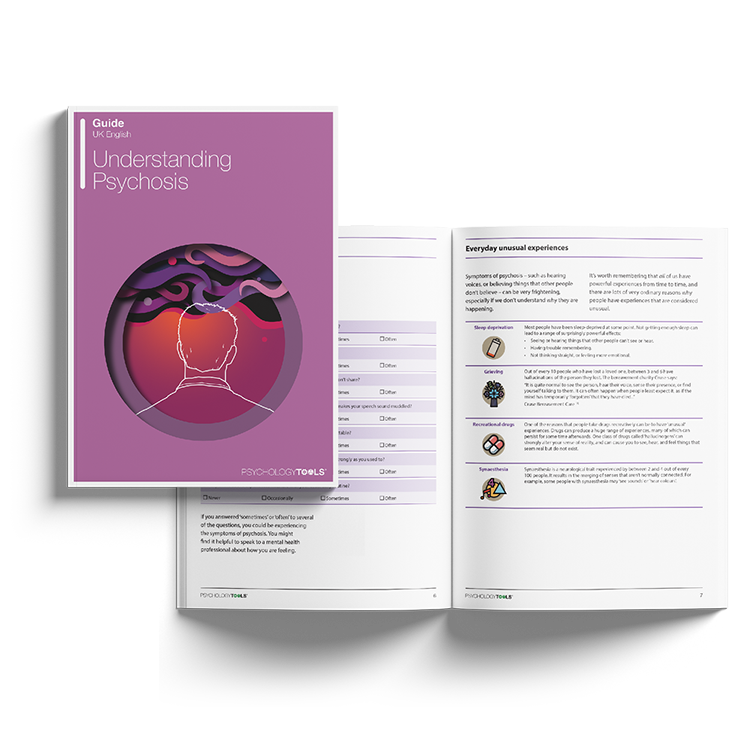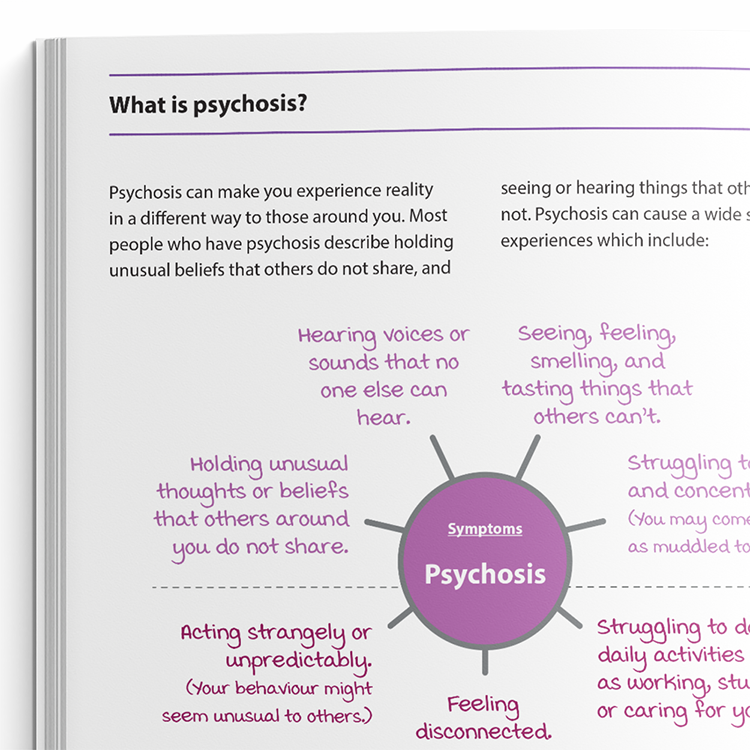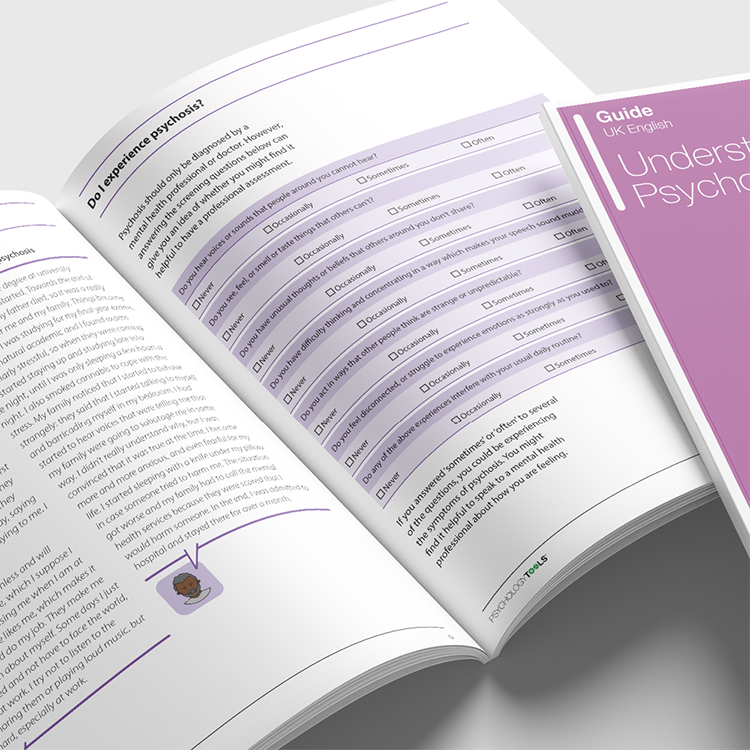Guide (PDF)
A psychoeducational guide. Typically containing elements of skills development.
An accessible and informative guide to understanding psychosis, written specifically for clients.

A psychoeducational guide. Typically containing elements of skills development.
To use this feature you must be signed in to an active account on the Advanced or Complete plans.

Our ‘Understanding…’ series is a collection of psychoeducation guides for common mental health conditions. Friendly and explanatory, they are comprehensive sources of information for your clients. Concepts are explained in an easily digestible way, with plenty of case examples and accessible diagrams. Understanding Psychosis is designed to help clients with psychosis understand more about their condition.
This guide aims to help clients learn more about psychosis. It explains what psychosis is, what the common symptoms are, and effective ways to address it, such as cognitive behavioral therapy (CBT).
Clients seeking to understand experiences such as hallucinations, delusions, or disorganized thinking, and to develop insight and strategies for managing symptoms.
Identify clients who may be experiencing psychosis.
Provide the guide to clients who could benefit from it.
Use the content to inform clients about psychosis and help normalize their experiences.
Discuss the client’s personal experience with psychosis.
Plan treatment with the client or direct them to other sources of help and support.
It is not uncommon for individuals to report perceptual experiences or beliefs that differ markedly from those of others. Research suggests that up to 10% of people have, at some point, heard voices or seen things that were not present (McGrath et al., 2015; Bevan et al., 2011). While many of these experiences are transient and non-distressing, when such phenomena are persistent, cause significant distress, and interfere with daily functioning, they may be indicative of psychosis.
The Understanding Psychosis guide has been developed to support clients who are experiencing symptoms of psychosis by providing clear, accessible psychoeducation. In addition to describing common symptoms and outlining evidence-based treatment approaches, the guide also explores psychological processes thought to maintain psychotic experiences.

Just enter your name and email address, and we'll send you Understanding Psychosis (English US) straight to your inbox. You'll also receive occasional product update emails wth evidence-based tools, clinical resources, and the latest psychological research.
Working...
This site uses strictly necessary cookies to function. We do not use cookies for analytics, marketing, or tracking purposes. By clicking “OK”, you agree to the use of these essential cookies. Read our Cookie Policy